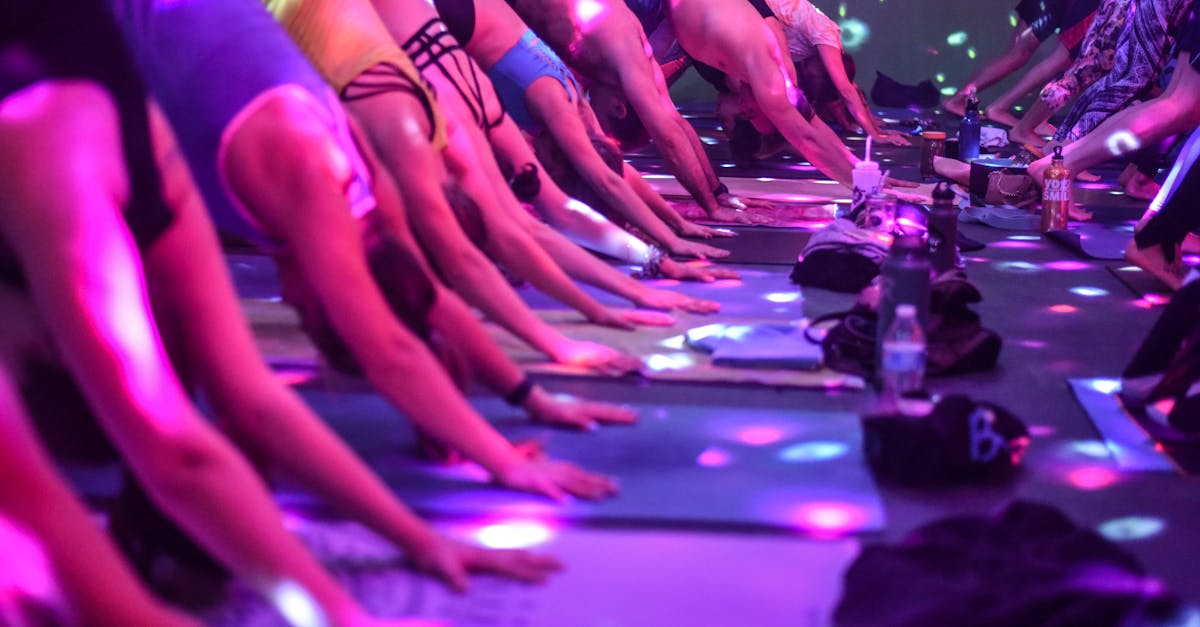Tight Hip Flexors and Weak Glutes: Balancing Strength for Stability
Restore Harmony: Understanding the Crucial Balance Between Hip Flexors and Glutes

Tight Hip Flexors and Weak Glutes: Finding Balance for Stability
Do you frequently experience nagging lower back pain or knee discomfort? These may stem from an underlying muscular imbalance involving tight hip flexors and weak glutes. Understanding the roles of these muscle groups and their impact on stability is crucial for maintaining optimal physical health.
The hip flexors, located at the front of the hip, allow you to lift your knees towards your chest. On the other hand, the glutes, situated at the back of your hips, are responsible for extending and rotating your hips. When these muscle groups are in balance, they work together to stabilize the pelvis and lower back, enabling efficient movement. However, imbalances can lead to pain and discomfort.
Ignoring this imbalance can disrupt your daily activities. Tight hip flexors can hinder your ability to perform everyday tasks like walking or climbing stairs, while weak glutes can compromise your stability and balance, increasing the risk of falls. Addressing these imbalances through targeted exercises and lifestyle modifications can alleviate pain and improve overall mobility.
1. Understanding the Hip Flexors and Glutes
Understanding the Hip Flexors and Glutes
The hip flexors are a group of muscles located at the front of the hip. Their primary function is to lift the knee towards the chest, which is essential for activities like walking, running, and climbing stairs. The main hip flexor muscles are the iliacus, psoas major, and rectus femoris.
The glutes, on the other hand, are a group of three muscles located at the back of the hip: the gluteus maximus, gluteus medius, and gluteus minimus. The glutes are responsible for extending the hip, rotating it outwards, and stabilizing the pelvis. They are essential for activities like walking, running, and squatting.
When the hip flexors and glutes are in balance, they work together to stabilize the pelvis and lower back, and to allow for efficient movement. However, imbalances can lead to pain and instability.
For instance, tight hip flexors can pull the pelvis forward, which can lead to lower back pain and an increased risk of knee injuries. Weak glutes can also contribute to lower back pain, as well as hip and knee pain. Additionally, weak glutes can make it difficult to maintain balance and stability, which can increase the risk of falls.
2. Causes of Tight Hip Flexors and Weak Glutes

Causes of Tight Hip Flexors and Weak Glutes
There are several factors that can contribute to tight hip flexors and weak glutes, including:
- Sedentary lifestyles: Sitting for prolonged periods of time can shorten the hip flexors and weaken the glutes. This is because when you sit, your hip flexors are in a shortened position, while your glutes are inactive. Over time, this can lead to an imbalance between the two muscle groups.
- Poor posture: Poor posture, such as slouching or hunching forward, can also lead to tight hip flexors and weak glutes. When you slouch, your hip flexors are in a shortened position, while your glutes are lengthened. This can lead to an imbalance between the two muscle groups.
- Certain sports activities: Some sports activities, such as running and cycling, can put excessive strain on the hip flexors and glutes. This can lead to tightness in the hip flexors and weakness in the glutes.
Other factors that can contribute to tight hip flexors and weak glutes include:
- Age: As we age, our muscles naturally lose strength and flexibility. This can lead to an imbalance between the hip flexors and glutes.
- Obesity: Obesity can put excessive strain on the hip flexors and glutes. This can lead to tightness in the hip flexors and weakness in the glutes.
- Pregnancy: Pregnancy can cause changes in the pelvis and spine, which can lead to tight hip flexors and weak glutes.
It is important to note that tight hip flexors and weak glutes can also be caused by underlying medical conditions, such as arthritis or nerve damage. If you are experiencing persistent pain or discomfort in your hips or lower back, it is important to see a doctor to rule out any underlying medical conditions.
3. Consequences of Muscle Imbalances
Consequences of Muscle Imbalances
Muscle imbalances, such as tight hip flexors and weak glutes, can lead to a variety of problems, including:
- Lower back pain: Tight hip flexors can pull the pelvis forward, which can strain the lower back muscles and lead to pain. Weak glutes can also contribute to lower back pain, as they are unable to properly stabilize the pelvis.
- Knee pain: Tight hip flexors can also put excessive strain on the knees, which can lead to pain and discomfort. Weak glutes can also contribute to knee pain, as they are unable to properly stabilize the knee joint.
- Reduced mobility: Tight hip flexors and weak glutes can limit your range of motion and make it difficult to perform everyday activities, such as walking, running, and climbing stairs.
In addition to these specific problems, muscle imbalances can also lead to other general health problems, such as:
- Poor posture: Muscle imbalances can lead to poor posture, which can put strain on the muscles and joints and lead to pain.
- Increased risk of injury: Muscle imbalances can increase your risk of injury, as they can make your muscles and joints more vulnerable to strain and injury.
- Reduced athletic performance: Muscle imbalances can reduce your athletic performance, as they can limit your range of motion and strength.
If you are experiencing any of the problems listed above, it is important to see a doctor or physical therapist to rule out any underlying medical conditions. Once any underlying medical conditions have been ruled out, your doctor or physical therapist can help you develop a treatment plan to address your muscle imbalances and improve your overall health and well-being.
4. Exercises to Strengthen Glutes and Stretch Hip Flexors

Exercises to Strengthen Glutes and Stretch Hip Flexors
There are a variety of exercises that can help to strengthen the glutes and stretch the hip flexors. Some of the most effective exercises include:
Glute bridges: Glute bridges are a great exercise for strengthening the glutes and hamstrings. To do a glute bridge, lie on your back with your knees bent and your feet flat on the floor. Press your heels into the floor and lift your hips until your body forms a straight line from your shoulders to your knees. Hold the position for a few seconds, then slowly lower back down to the starting position.
Squats: Squats are another great exercise for strengthening the glutes and hamstrings. To do a squat, stand with your feet shoulder-width apart and your toes slightly turned out. Bend your knees and lower your body until your thighs are parallel to the floor. Keep your chest up and your back straight. Hold the position for a few seconds, then slowly return to the starting position.
Lunges: Lunges are a great exercise for strengthening the glutes, hamstrings, and quadriceps. To do a lunge, step forward with one leg and bend your knee so that your thigh is parallel to the floor. Keep your other leg straight and your heel on the floor. Hold the position for a few seconds, then slowly return to the starting position.
Kneeling hip flexor stretch: The kneeling hip flexor stretch is a great way to stretch the hip flexors. To do the stretch, kneel on one knee and place your other foot flat on the floor in front of you. Lean forward and gently push your hips forward until you feel a stretch in your hip flexors. Hold the stretch for 30 seconds, then slowly return to the starting position.
Child’s pose: Child’s pose is a great way to stretch the hip flexors and lower back. To do child’s pose, kneel on the floor with your knees hip-width apart and your toes pointed. Sit back on your heels and fold forward, resting your forehead on the floor. Hold the stretch for 30 seconds, then slowly return to the starting position.
5. Tips for Maintaining Balance and Stability
Tips for Maintaining Balance and Stability
In addition to strengthening the glutes and stretching the hip flexors, there are a number of other things you can do to maintain balance and stability in everyday life, including:
- Maintaining good posture: Good posture is essential for maintaining balance and stability. When you stand or sit up straight, your body is better able to distribute its weight evenly and to react to changes in your environment.
- Engaging in regular exercise: Regular exercise can help to improve your overall balance and stability. Exercises that focus on strengthening the core muscles, such as Pilates and yoga, are particularly beneficial.
- Using proper lifting techniques: When lifting heavy objects, it is important to use proper lifting techniques to avoid injuring your back or hips. Bend your knees and lift with your legs, not your back. Keep the object close to your body and avoid twisting your body while lifting.
- Wearing supportive shoes: Wearing supportive shoes can help to improve your balance and stability. Shoes with a good arch support and a low heel can help to keep your feet and ankles in a neutral position.
- Using a cane or walker: If you have difficulty maintaining your balance, you may want to use a cane or walker. A cane or walker can help to provide you with additional support and stability.
By following these tips, you can help to maintain your balance and stability and reduce your risk of falls.
Quiz
- True or False: Tight hip flexors can contribute to lower back pain.
- Which of the following is NOT a cause of tight hip flexors? (a) Sedentary lifestyle (b) Poor posture (c) Excessive running (d) Obesity
- Which of the following exercises is NOT effective for strengthening the glutes? (a) Glute bridges (b) Squats (c) Lunges (d) Bicep curls
- True or False: Maintaining good posture can help improve balance and stability.
- Which of the following is NOT a tip for maintaining balance and stability? (a) Engaging in regular exercise (b) Using proper lifting techniques (c) Wearing high heels (d) Using a cane or walker if necessary
Answer Key
- True
- (d) Obesity
- (d) Bicep curls
- True
- (c) Wearing high heels
